On Future Farming
How do modern solutions like the Floating Farm near Rotterdam or concepts such as vertical farming and hydroponics shape our agriculture?
In relation to the whole world, the average westerner uses up about double the amount of space that would be adequate, in order to produce their food. Especially if they eat meat. The crops for livestock take up about 2/3 of their ‘share’ of farm land. Which means, everyone is using more farming land, than they should.
But instead of educating people and changing the way the consumers buy and eat, farmers and politicians are trying to solve the problem from another end. One of these ideas is to utilize space in industrial areas otherwise left ‘unused’ - whether it be with vertical farms or with new concepts like the floating farm, which houses cows on a stable on a platform on the Nieuwe Maas in Schiedam.
These absurd patching solutions raise the questions of what a realistic approch on farming in the future could be? And are even small traditional ecological farms going to be replaced by farming factories eventually?
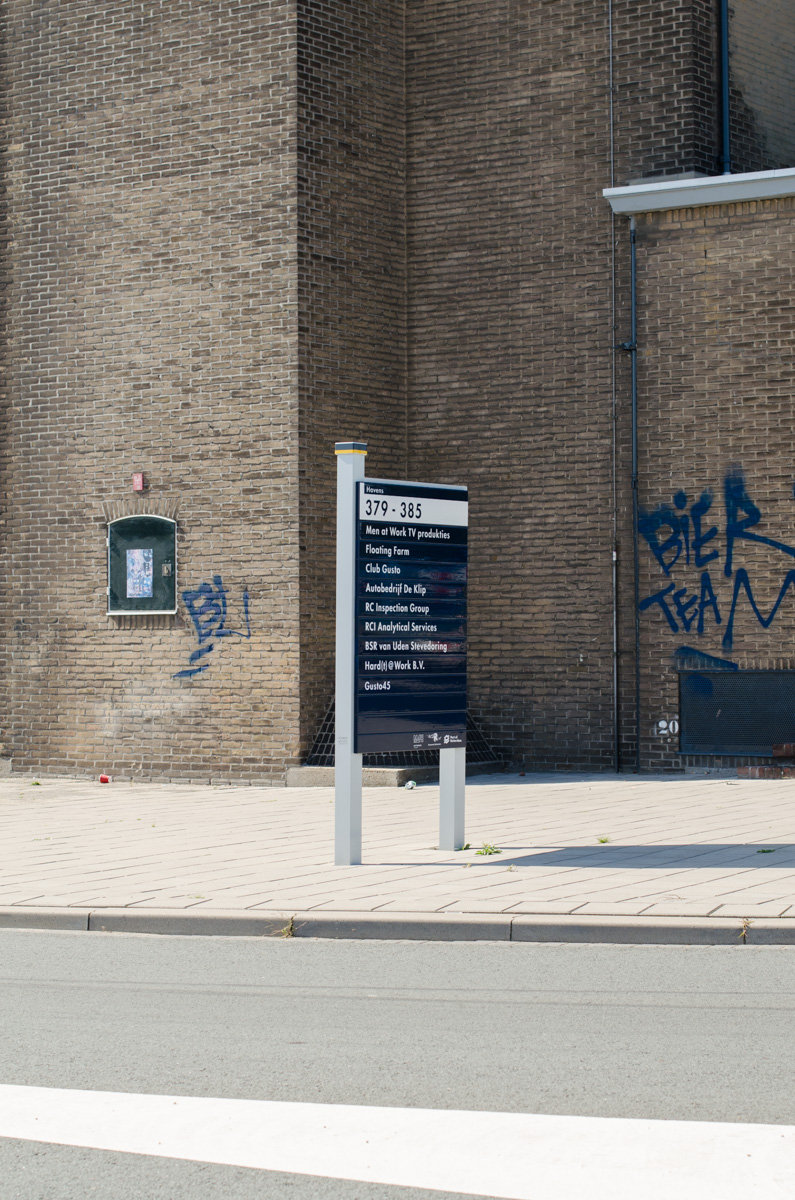
A signpost towards the floating farm in the middle of an industrial area in Schiedam, the Netherlands.
A traditional ecological farming in Dachau, Germany.
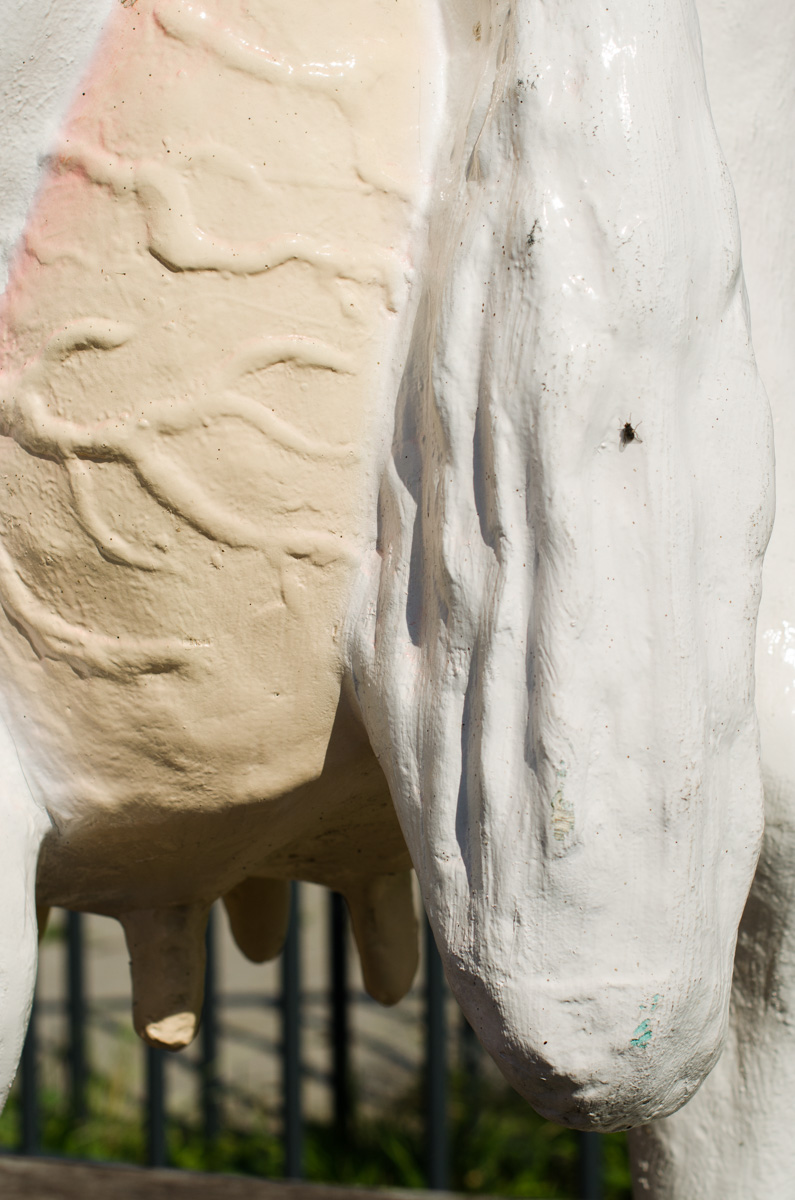
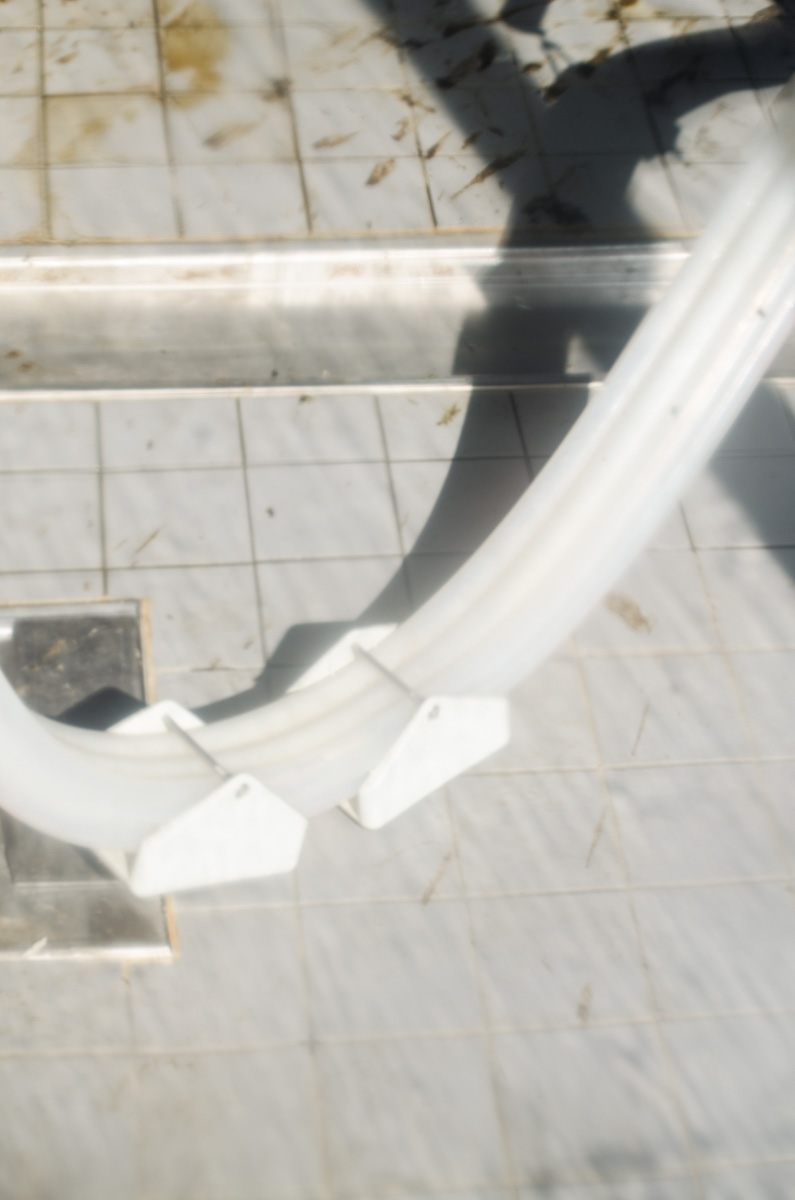
Milk flowing through the tubes of the milking robot in Schiedam.
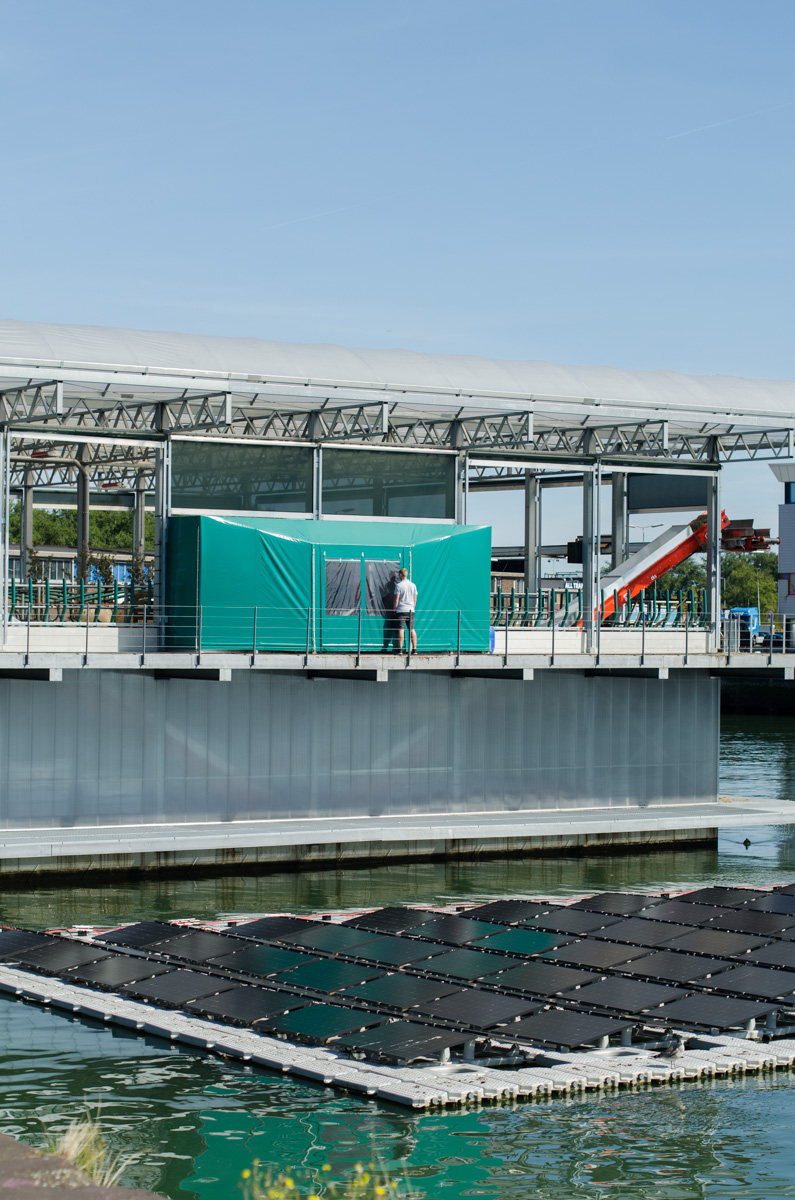
A visitor watching a cow getting milked by a robot on the floating farm.
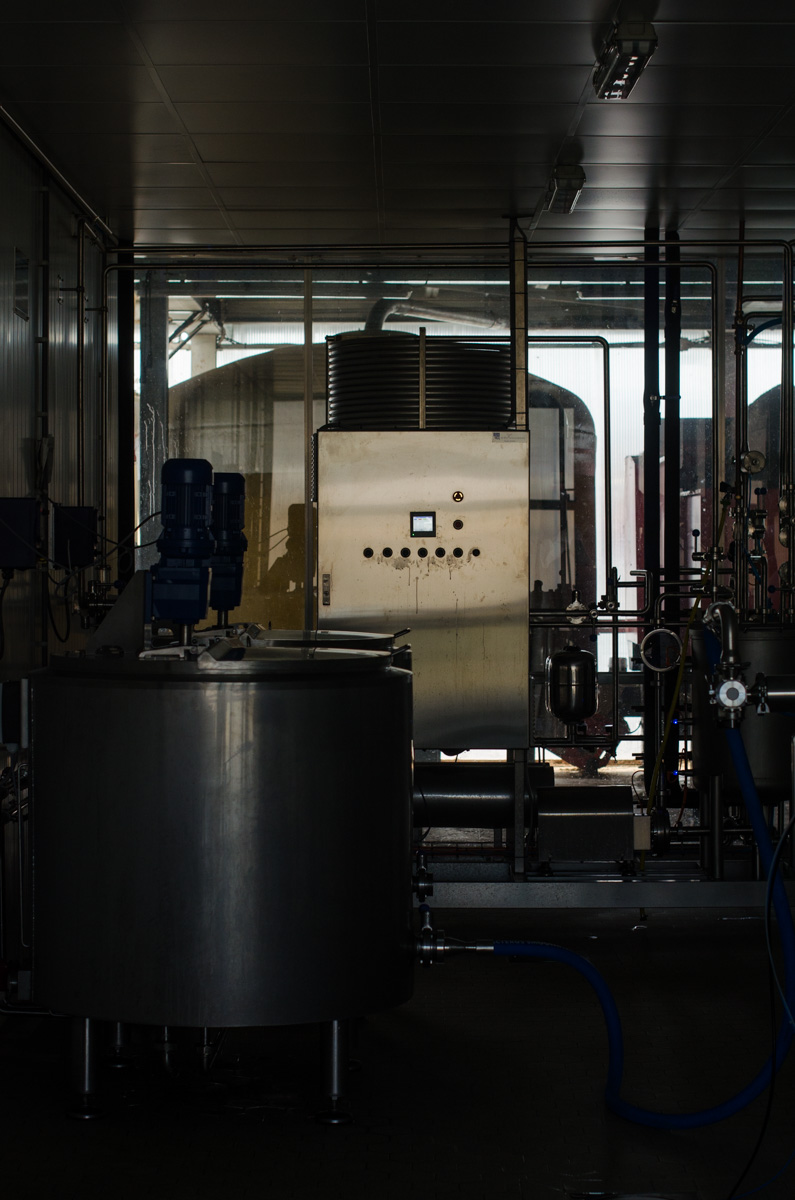
Part of the pilot project on future farming in Rotterdam. The milk is being processed in the same bilding as the stable is. The machines just sit a level underneath them.
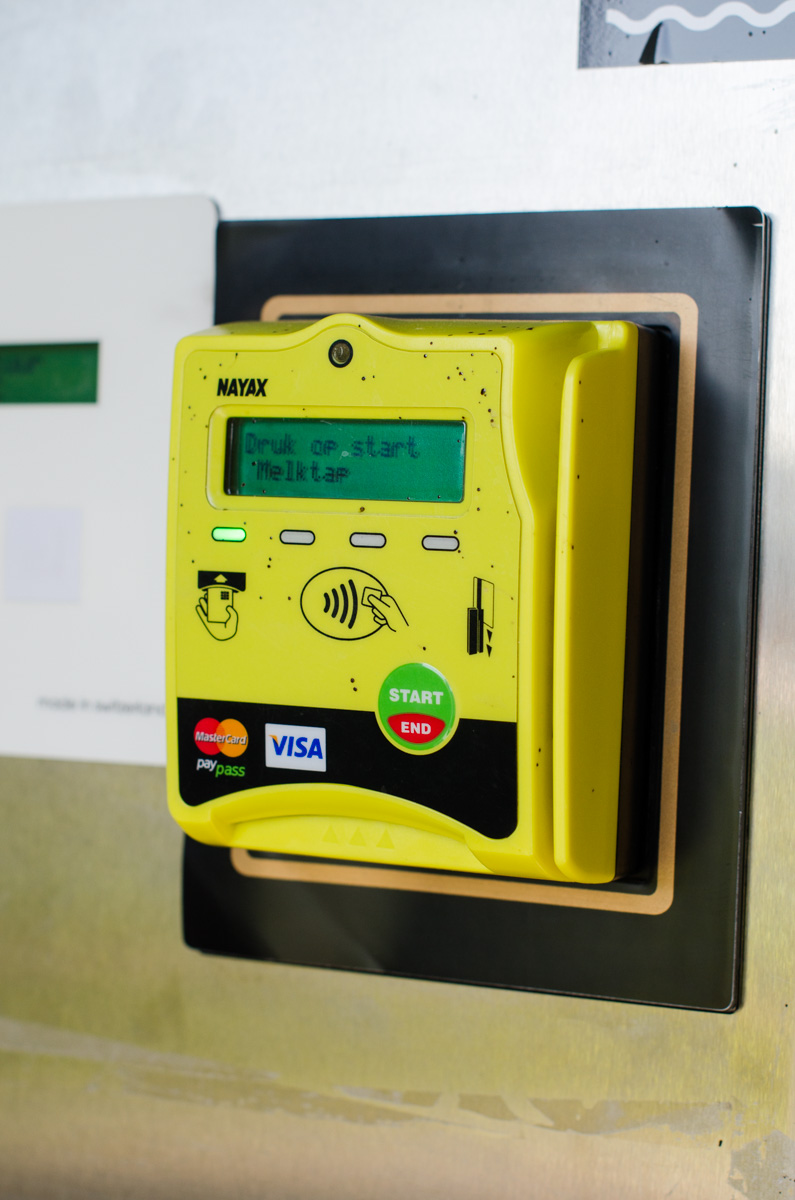
The milktap makes is easy for visitors to tap their own milk in a container on the farm. They can pay with card and without contact to any human.
An ecological farmer in Dachau, examining the carrot seeds.
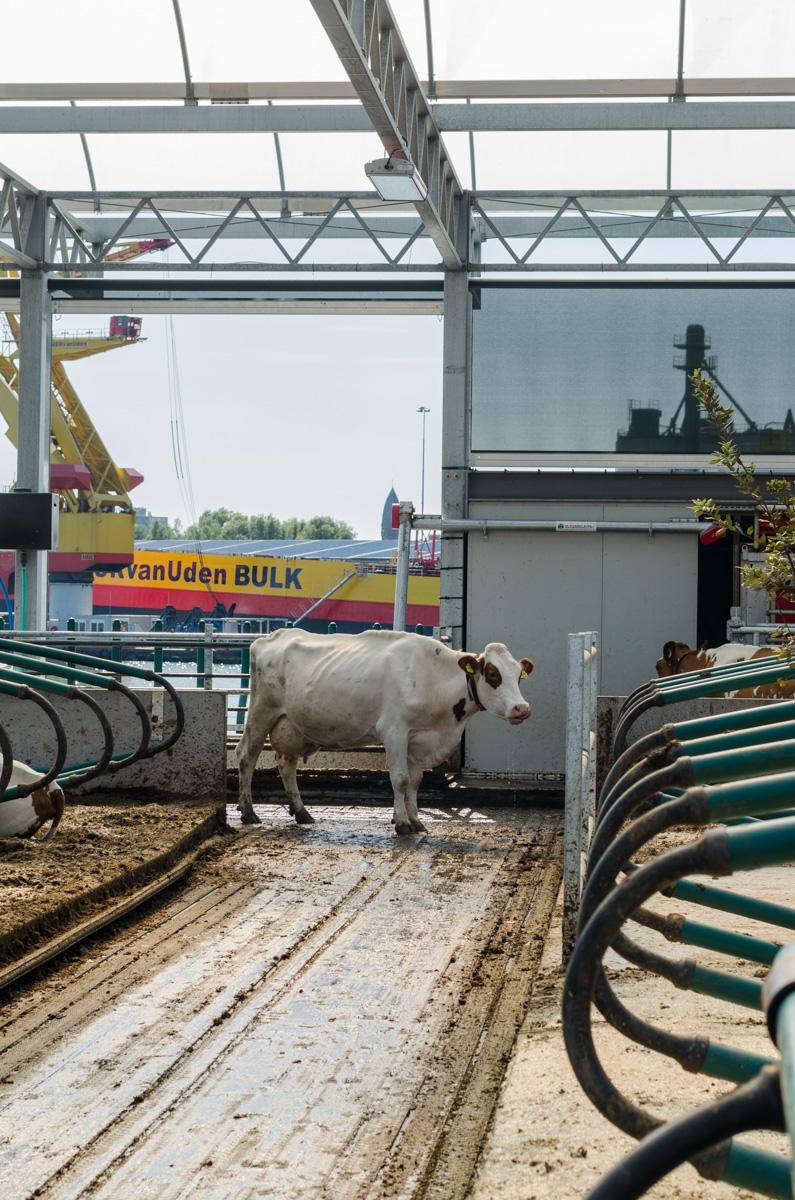
A cow on the floating farm standing in line to be milked.
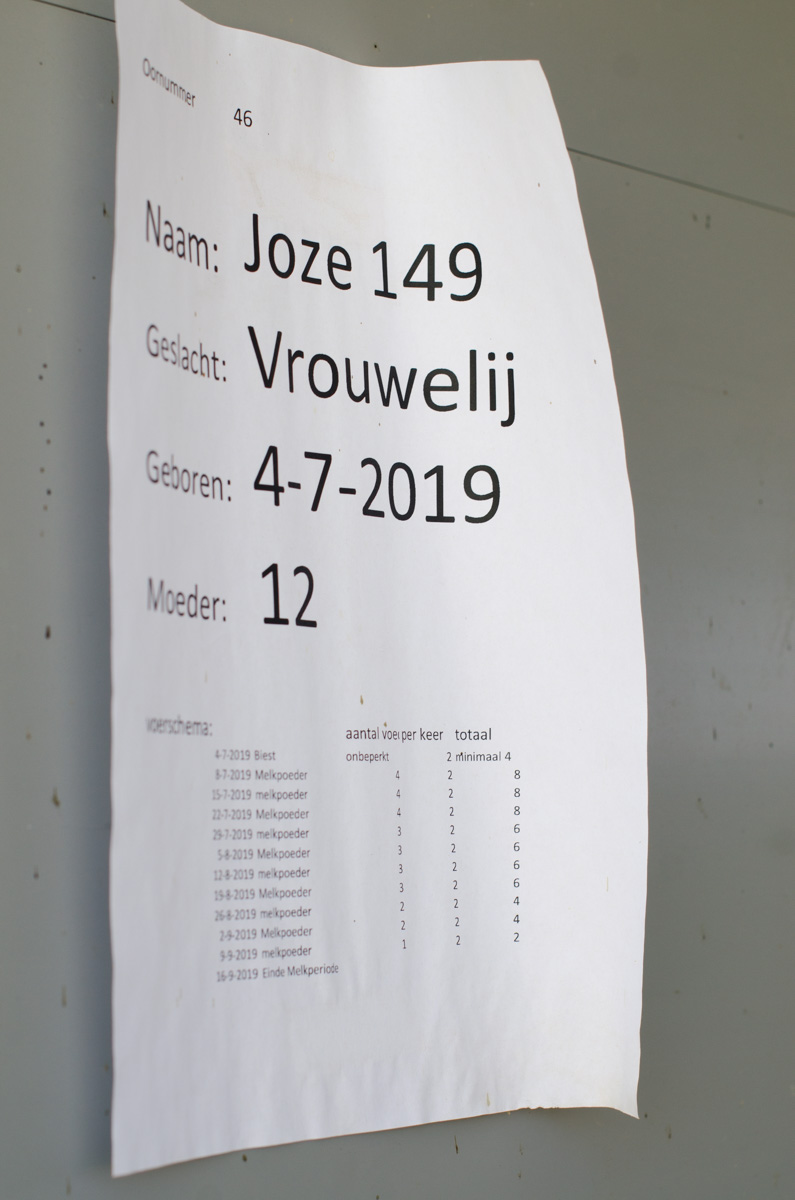
Although the floating farm is relatively small, the mother cow is reduced to a number.
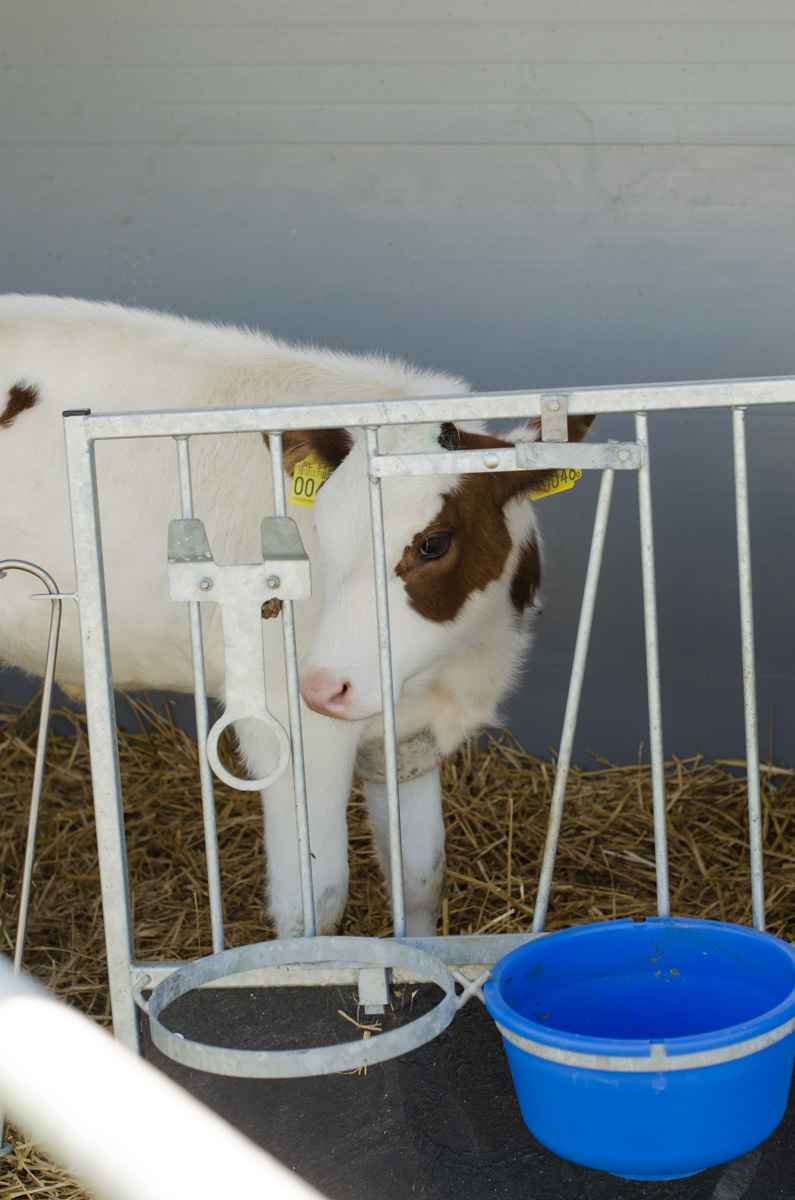
This calf is growing up without its own mother's milk, although it's mum is a few meters away. Instead, it is being nourished with milk powder.
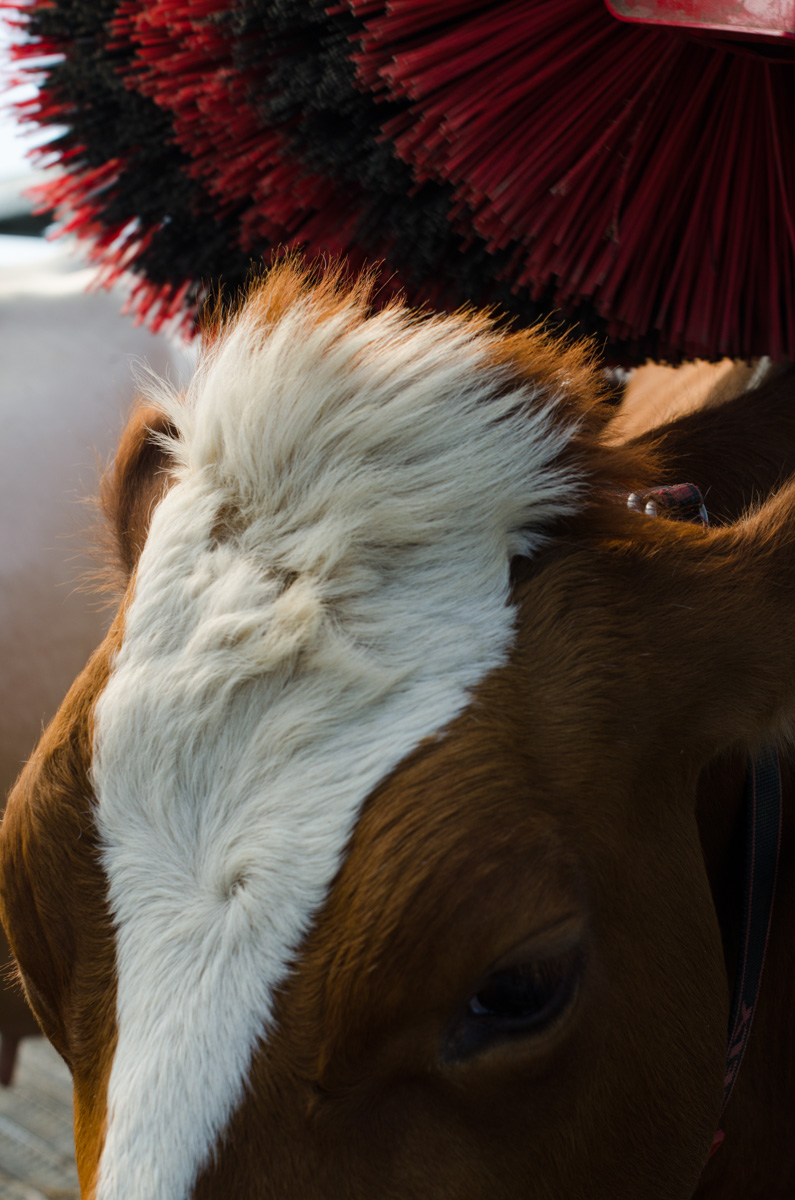
A cow using the brushing machine. These rotating brushes subsitute the branches and bark cow’s rub themselves against in nature to take care of their fur. They also reduce stress and make up for natural grooming behaviours. Furthermore, it keeps the cow more active - because it lays down less on the filthy stable floor. This decreases the amount of bacteria settling on the udder.
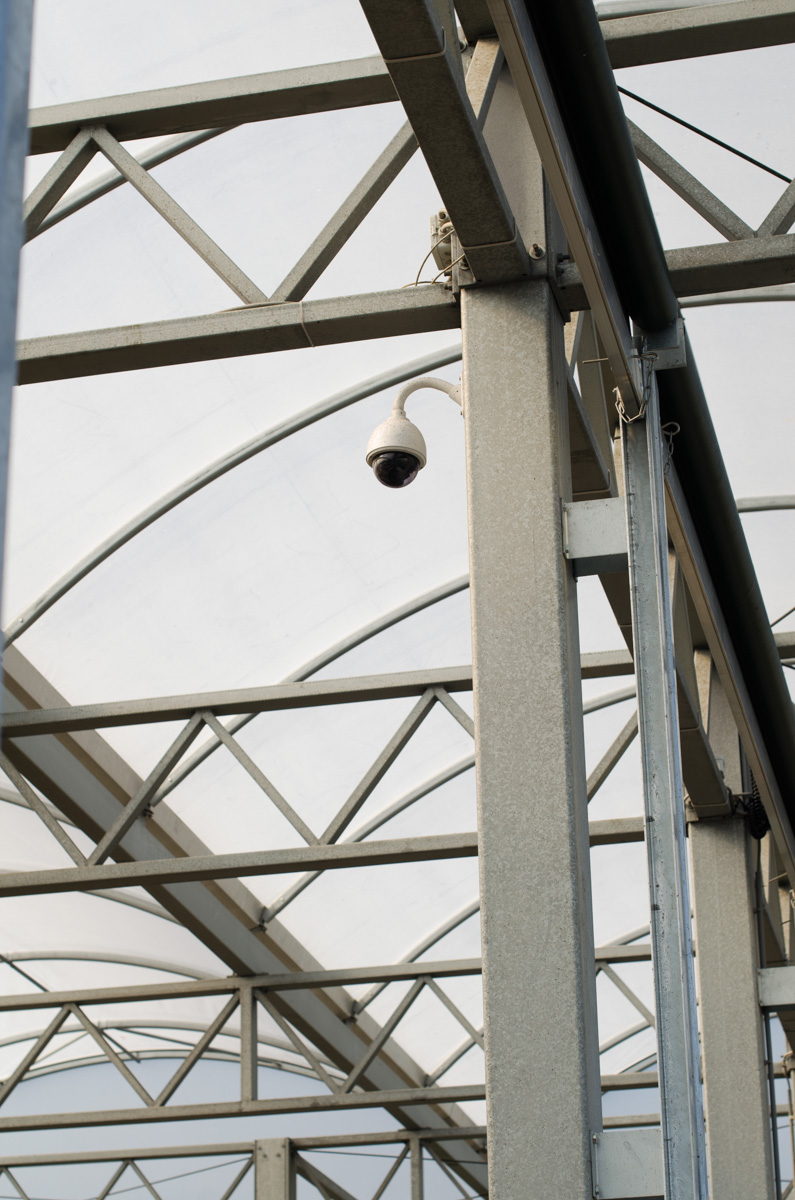
A security camera in the open stable on the Nieuwe Maas. Because the farmer doesn’t live close to the stable anymore, automated machines and cameras help to keep an overview and the money machine woking at all time.